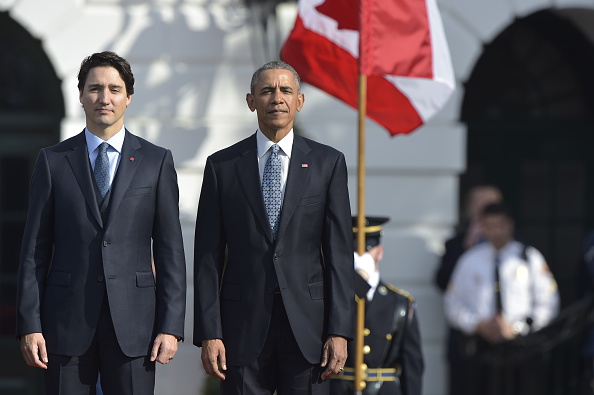
As Prime Minister Justin Trudeau visits Washington D.C. to discuss a North American climate strategy with President Barack Obama, I urge both leaders to think big on how to leverage our close relationship and propel us forward in the race against climate change.
For more than two centuries, the United States and Canada have worked together to manage natural resources and protect the environment. From the Boundary Waters Treaty in 1909, to the 1991 Air Quality Agreement to fight acid rain, to the 2015 Iqaluit Declaration combating Arctic climate change and supporting indigenous communities, our countries have risen time and again to address environmental challenges together.
No challenge demands more urgency from our countries’ leaders than climate change.
Canada’s recent actions on climate change show just how seriously we are tackling this challenge. In the days immediately following his election, Trudeau turned around Canada’s fossil-fuel dominated climate policy, setting a new course that gained global attention and helped pave the way for a meaningful global climate agreement in Paris. Leading up to the first U.S.-Canada state dinner in nearly 20 years, Trudeau and premiers from coast to coast developed the beginnings of a pan-Canadian plan to put a price on carbon, which could make Canada the first North American country with an economy-wide price on carbon pollution.
In the nine northeastern American states currently participating in a regional cap-and-trade system, carbon pollution from power plants fell by 40% from 2005 to 2013 while the region’s economy grew significantly. Even in a vacuum of federal leadership on climate that existed for almost a decade, our countries found ways to work together at the state and province level, breaking new ground when Quebec joined California’s carbon market. The trans-border cooperation expanded in 2015 to include my own province of Ontario. Last year Ontario hosted the Climate Summit of the Americas, drawing U.S. governors to Toronto for climate talks.
We’re making progress, but we’re not moving quickly enough. We need to capitalize on good results, existing regional actions and relationships. Given the success and acceptance of carbon markets in North America to date, Canada and the U.S. should work together with a goal of establishing a broad North American carbon market as the most effective tool to fight climate change.
For Ontario, a price on carbon is baked into Ontario’s 2016 budget—so our fiscal planning reflects the climate reality that our citizens are already facing. We have eliminated coal-fired power plants from our energy mix, the single largest reduction of greenhouse gas emissions in North America. We’re committing $325 million to projects that will help homeowners use less energy, support more electric vehicle charging stations across Ontario, retrofit social housing developments, help businesses reduce emissions, and help fund local environmental organizations. We are introducing one of the world’s most ambitious electric vehicles incentive programs. And starting in the 2017 calendar year, Ontario’s carbon price will come into effect—every penny from our cap-and-trade program will be reinvested in initiatives to help Ontario families and businesses reduce their emissions to help offset the carbon price.
Ontario’s north is an example of how significantly climate change is impacting our world. It’s a region whose infrastructure, economy and food system depend on ice roads. These regions are warming the fastest, and climate change is outpacing our government’s ability to adapt to it. The impacts in Ontario will be extraordinarily difficult to absorb, but they will pale in comparison to diminishing the livability of our planet.
In the near future, the cost of climate change on Canadian infrastructure alone will stretch into the tens of billions. The U.S. could lose up to $100 billion of coastal property in the next 35 years because of sea level rise.
We are taking aggressive action because we value our culture, our land and our way of life. To meet the climate change challenge, our two countries have to work together. When countries, provinces and states become trading partners to promote clean energy, all jurisdictions realize the economic benefits.
President Obama and Prime Minister Trudeau have an opportunity to accelerate North America’s fight against climate change. The economic benefits and opportunities for industrial modernization, clean energy and clean technology are estimated in the trillions. Let’s hope that Canada and the United States take the needed bold steps together to make sure our communities realize the benefits.
More Must-Reads from TIME
- Donald Trump Is TIME's 2024 Person of the Year
- Why We Chose Trump as Person of the Year
- Is Intermittent Fasting Good or Bad for You?
- The 100 Must-Read Books of 2024
- The 20 Best Christmas TV Episodes
- Column: If Optimism Feels Ridiculous Now, Try Hope
- The Future of Climate Action Is Trade Policy
- Merle Bombardieri Is Helping People Make the Baby Decision
Contact us at letters@time.com